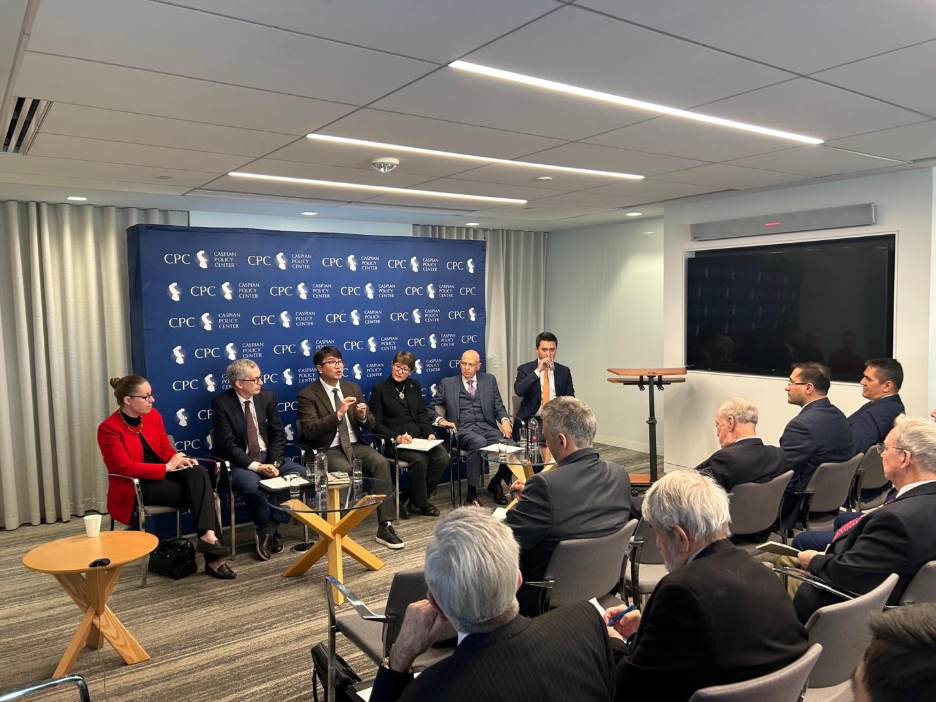A Decade of Partnership: What Lies Ahead for C5+1?
Recent Articles
Author: Caspian Policy Center
11/06/2025
November 5, WASHINGTON, D.C. - As the United States and Central Asian leaders prepared to meet for the C5+1 Presidential Summit, the Caspian Policy Center (CPC) convened a discussion exploring the future of U.S.-Central Asia cooperation. Ten years after its launch in 2015, the C5+1 has become a central pillar of U.S. engagement with Central Asia—bringing together Kazakhstan, the Kyrgyz Republic, Tajikistan, Turkmenistan, and Uzbekistan with the United States to advance regional stability, sovereignty, and connectivity. For this discussion, CPC convened regional and U.S. diplomats, policy experts, and members of academia and the business community to examine how the C5+1 can approach its second decade—deepening economic ties, strengthening regional resilience, and positioning Central Asia as a reliable partner in a rapidly shifting geopolitical landscape.

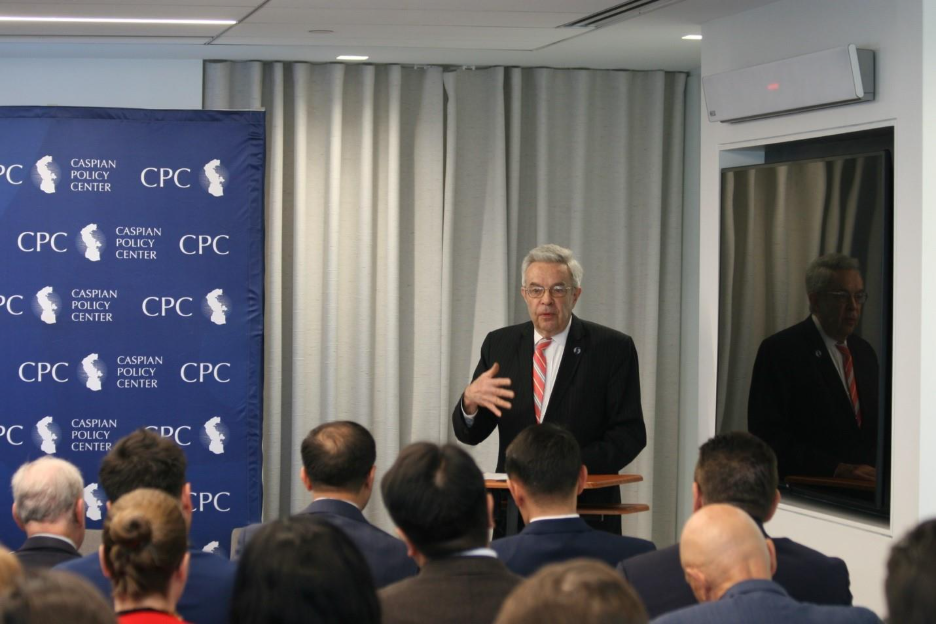
CPC President and CEO Efgan Nifti and Chairman of the Board Ambassador (ret.) Richard Hoagland kick-started the discussion on what lies ahead for the C5+1 format. They highlighted recent progress within the C5+1 framework, noting that the Trump administration brought renewed attention to Central Asia and underscored shared interests in critical minerals, investment, and global connectivity.
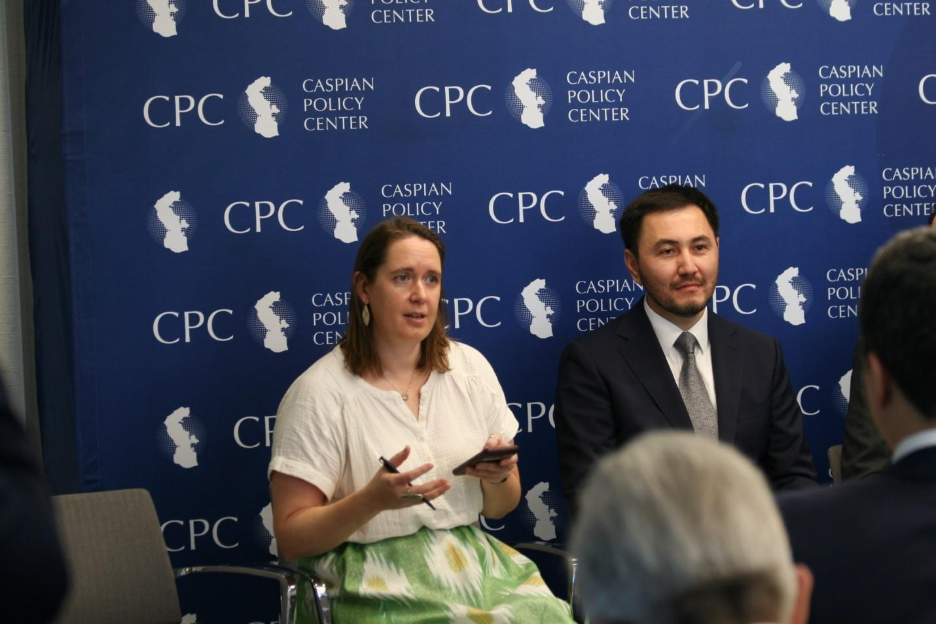
The first panel, entitled Deepening Strategic Partnership Amid Global Shifts, was moderated by Catherine Putz, the Managing Director for The Diplomat website, who recognized that there are a number of challenges and opportunities ahead for the region as it takes the next steps. The panelists took a deeper look at the significance of the C5+1 format historically and discussed plans for deepening cooperation with the region within the framework of the upcoming Presidential Summit.

Dr. Eric Rudenshiold, CPC’s Senior Fellow for Caspian Affairs, underlined that Russia’s second invasion of Ukraine “completely changed the dynamics that we’ve seen in Central Asia, where countries and their economies are completely upturned by this shift in sanctions, which force you to do business in different ways.” Commenting on the emerging cooperation both with and within the region, Rudenshiold said: “There are lots of reasons to push for broader cooperation, and part of that is getting rid of Soviet legacies.” Rudenshiold further spoke on the importance of addressing environmental issues: “Central Asia has to tackle the climate change issue, and it has to be more than drip irrigation.... Environmental challenges are a concern of interest for Central Asia, and they are on the C5+1 agenda. If they push for it, Washington will respond.”
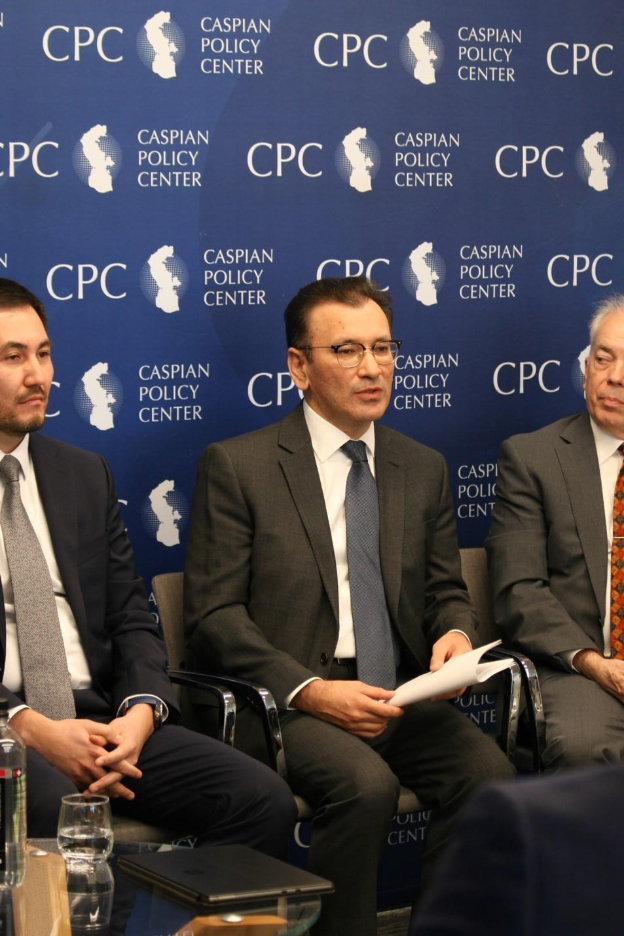 Javlon Vakhabov, Managing
Javlon Vakhabov, Managing
Director of the International Institute for Central Asia (IICA) in Tashkent and former Ambassador of Uzbekistan to the United States, spoke on the historic significance of the C5+1 Presidential Summit taking place in Washington, DC, on November 6. Vakhabov noted that it’s of great importance for the region to stand united in the face of global geopolitical changes: “Global shifts are forcing many countries to pick sides, but Central Asia remains firm - we are not picking sides, we are engaging with all of our partners to make sure that Central Asia remains prosperous, resilient, and secure.” He added that these changes include instability in maritime routes, and global trade wars, which further emphasize the growing importance of the Middle Corridor. Vakhabov also spoke on the results of the recent U.S.-Central Asia Think Tank Forum that IICA organized in Tashkent, Uzbekistan, in October. Vakhabov concluded by stating that it is important for Uzbekistan to continue doing commerce with the United States, and that he believes that more major deals between the two countries can be accomplished under the Trump administration.
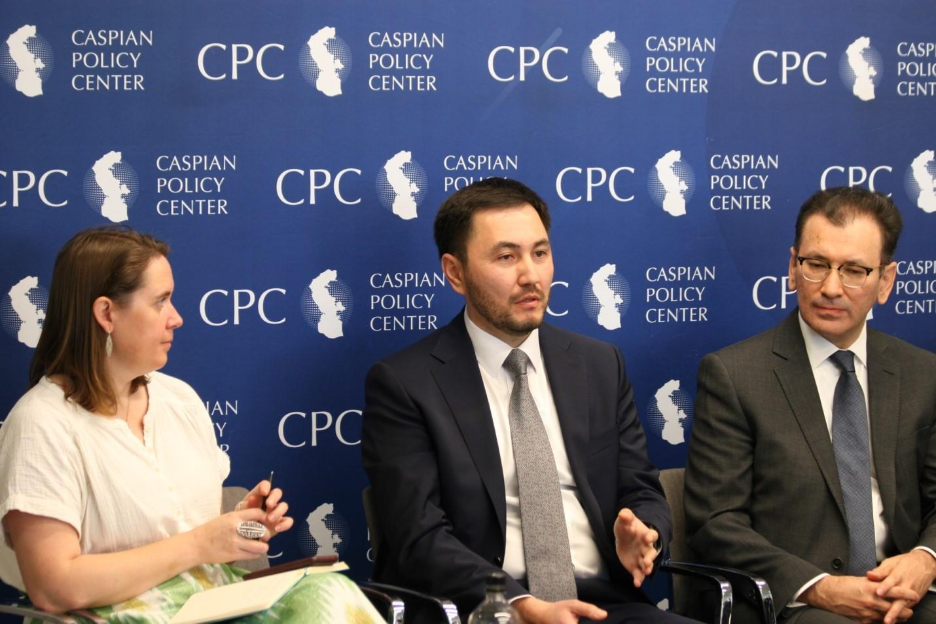
Zhandos Shaimardanov, Director of the Kazakhstan Institute for Strategic Studies (KazISS), picked up on the positive changes witnessed in the region: “Intellectual awakening in Central Asia is reflected in two major events that we held recently in the region: the U.S.-Central Asia Think Tank Forum and the Astana Think Tank Forum.” Shaimardanov spoke on the multi-vector foreign policy pursued by a growing number of states in Central Asia, including Kazakhstan. “Multi-vector foreign policy allows us to bring together those who usually sit on different sides on the tables and have them talk to each other on issues such as nuclear disarmament,” he said. Commenting on U.S.-Central Asia relations, Shaimardanov stated that ties are entering a new phase that is pragmatic and mutually beneficial, with “American companies … already partnering with Central Asia in order to develop more effective supply chains for the global economy.”
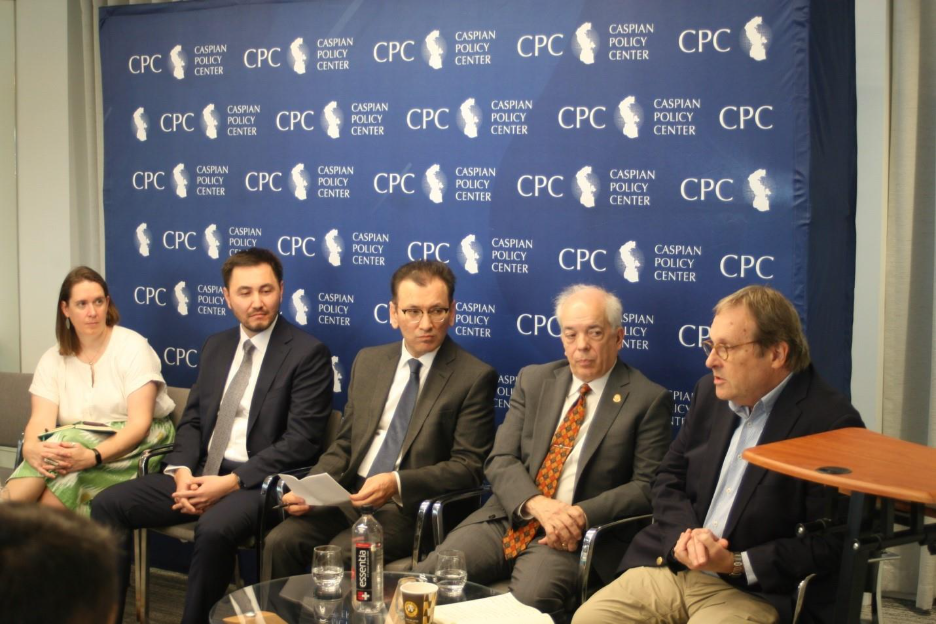
Clark Adams, former Director for Central Asian Affairs in the Office of the Under Secretary of Defense for Policy at the U.S. Department of Defense, noted the progress achieved in regard to the C5+1 format: “For the last 10 years, the C5+1 has done an awful lot for Central Asian states to work together more closely, and that serves everybody’s interest.” Adams discussed several challenges facing the region, noting that current border and customs procedures are major factors contributing to bureaucratic inefficiencies and a lack of regional cohesion. Looking ahead, Adams argued that the key question will be finding what is the more substantive way of engaging within the C5+1 format: “In the longer term, the strength in numbers idea that drives C5+1 format in the economic and political realm will eventually drive the security realm.”
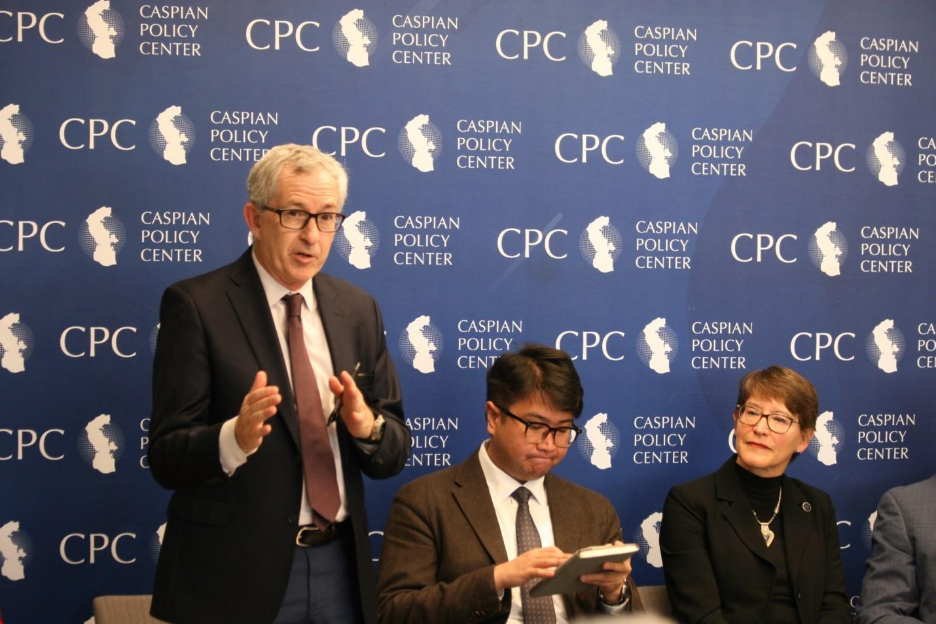
The second panel, entitled The Next Phase of U.S.-Central Asia Cooperation: Economic Connectivity, Energy, and Resilience was moderated by Eric Green, Advisory Board Member of CPC, and former Senior Director for Russia and Central Asia at the U.S. National Security Council. Green opened the discussion by emphasizing that deepening economic ties and strengthening regional resilience in Central Asia have long been priorities not only for the region’s countries but also for the United States since those countries’ independence from the Soviet Union. He noted that the United States has significant ground to make up, as China has become Central Asia’s largest trading partner with $95 billion in trade—roughly double that of Russia.

Brianne Todd, Non-Resident Senior Fellow at the Atlantic Council’s Eurasia Center, and Adjunct Assistant Professor at Georgetown University, underscored the importance of fostering economic resilience in Central Asia, noting that many of the C5+1’s achievements over the past decade have centered on strengthening the region’s economic foundations. While praising the work done previously in the region by U.S. agencies such as USAID, Todd stated: “When you look at the assistance that we were giving Central Asia just last year, the numbers weren’t very large.... Assistance wasn’t really the model to begin with, and I think we really do want more foreign direct investment.” Todd then stressed that water management remains a critical issue for the region for its mining, refining, and processing of the critical minerals, as well as for data centers. She added that there are several tools at the disposal of the U.S. administration to work with the countries of the region: “Whether that is the Commercial Law Development Program (CLDP), the U.S. Department of Agriculture (USDA), the U.S. International Development Finance Corporation (DFC), or the Export-Import Bank (EXIM), there is the technical assistance to be able to work on some of these environmental, and specifically water-related, issues.”
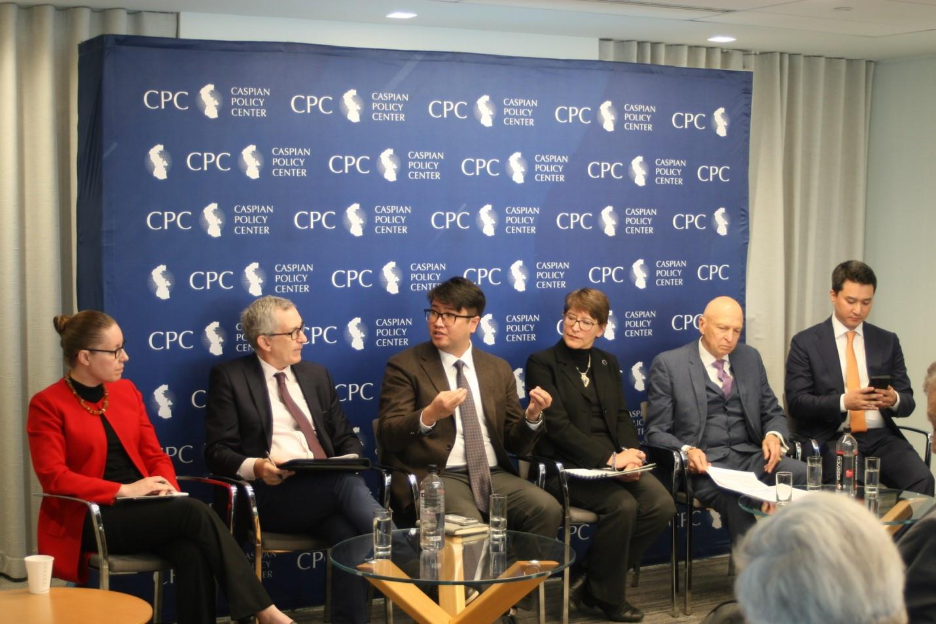
Iskander Akylbayev, CEO of Xander Group in Kazakhstan, spoke on the critical minerals dialogue, which has been at the forefront of the agenda for U.S.-Central Asia partnership discussions. “We need partnership with the U.S. on processing, refining of critical minerals to build a sustainable supply chain where we can also be an equal partner,” said Akylbayev. He further added that Kazakhstan is working on the policies for critical minerals, where the business community is also involved: “We need to develop ports (Aktau, Kuryk), work with our partners in Azerbaijan, Georgia, and also in Europe.” Akylbayev also discussed the importance of human capital, arguing that to process and refine critical minerals, human capital, and people who have expertise in STEM is essential. In this regard, Akylbayev noted that U.S. cooperation with the region in education can be mutually beneficial.
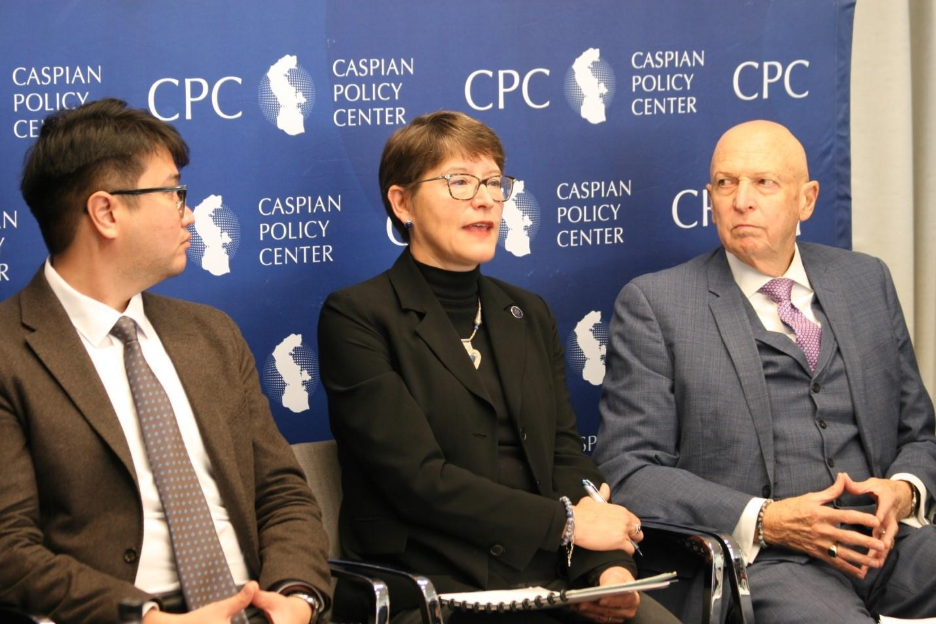
Theresa Sabonis-Helf, Professor of Practice at Georgetown University, focused on the energy dynamics of Central Asia. “Every one of the CA states has added more power-generating capacity and almost all of them are experiencing frequent crises,” she said, arguing that critical minerals, pursuing a data future – all these priority areas rely on a reconstruction of the electricity grid of Central Asian countries. Speaking on natural gas trends in the region, Sabonis-Helf noted that China has played an active role in advancing gasification efforts across Central Asia. She added that with natural gas exports declining in countries such as Uzbekistan, some producers have increasingly turned to Russia as an alternative export destination. In this line, she emphasized, “It probably serves the region’s interests more if that’s renegotiated so that there is more Turkmen gas and less Russian gas in the region.”
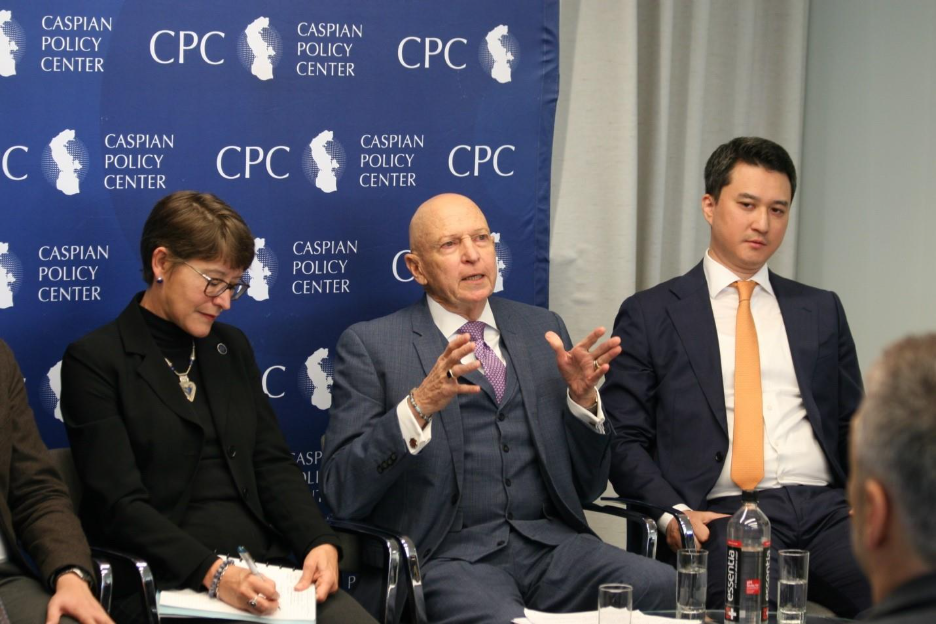
Ambassador (ret.) Matthew Klimow, CPC’s Advisory Board Member and former U.S. Ambassador to Turkmenistan, highlighted the incremental progress of Central Asian countries in regional integration, as exemplified by the C5+1 and B5+1 summits. Ambassdor Klimow noted the significant advancements in transportation and trade facilitation, despite challenges posed by external factors: “Outside factors have intervened to push the C5+1 agenda forward as well - the aggression of Putin in Ukraine, demand for critical minerals and rare earth elements in the U.S., the peace agreement between Armenia and Azerbaijan.” Klimow continued, “After the fall of Kabul, the United States has looked less and less to South Asia, and I think we need to pay attention because not only Central Asia will contribute in terms of trade in this connectivity architecture that we’ve been talking about, but also that adds to the stability in the greater region.”
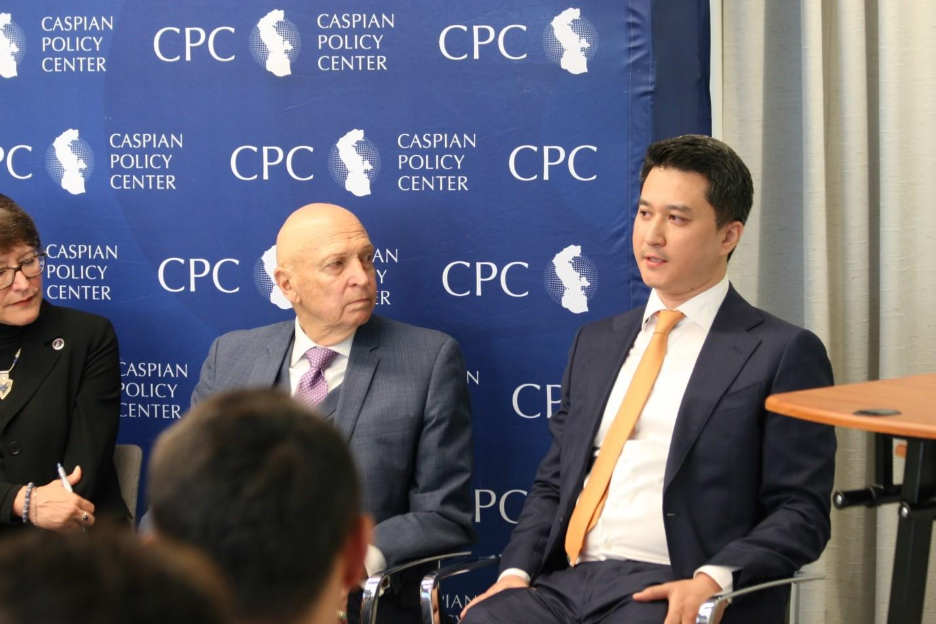
Zhandos Temirgali, President of 1Thirty Holding, a Kazakhstan-originated company in chemical manufacturing and industrial innovation, welcomed bipartisan support in the United States for the C5+1 format. He underlined that especially after Russia initiated the war against Ukraine,, the last three years have been important for U.S.-Central Asia relations. In this context, Temirgali spoke about the importance of the Middle Corridor, through which the overall cargo transit volume increased by 60% in 2024, reaching 4.5 million tons, with goals to reach 10 million tons within the next two or three years. He argued that Azerbaijan in this regard can be considered as a part of this region: “Central Asia is not only these five countries, but Azerbaijan as well.” Temirgali concldued by thanking CPC for “creating the semantic meaning of what the Caspian region means.”
